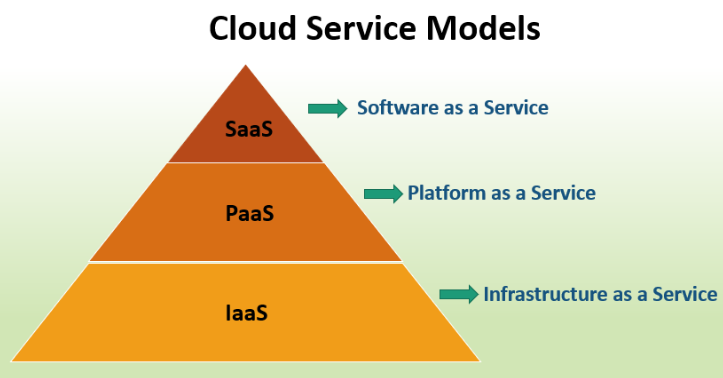As the digital transformation continues to reshape industries, understanding the foundational components of cloud computing becomes essential. One of the most important aspects of cloud infrastructure is the cloud service model. These models—Infrastructure as a Service (IaaS), Platform as a Service (PaaS), and Software as a Service (SaaS)—serve different purposes and cater to various business needs. Whether you’re launching a startup or optimizing enterprise operations, choosing the right model can drastically impact your agility, cost, and scalability. In this post, we’ll explore each service model, how it works, and how it fits into the broader cloud hosting and web hosting provider ecosystem.
What is IaaS (Infrastructure as a Service)?
Infrastructure as a Service (IaaS) is the most basic level of cloud services. It provides virtualized computing resources over the internet, such as servers, storage, and networking components. With IaaS, businesses rent IT infrastructure from a cloud hosting provider on a pay-as-you-go basis.
Key Features:
-Virtual machines and storage
-Dynamic scaling
-Load balancing and networking
-API access for full automation
Examples of IaaS Providers:
-Amazon Web Services (AWS EC2)
-Microsoft Azure
-Google Compute Engine
Best For:
-Developers and system administrators
-Businesses needing flexibility and control
-Enterprises with custom-built applications
Benefits:
-Scalability without capital investment
-High level of control over infrastructure
-Cost-efficient for rapidly changing needs
What is PaaS (Platform as a Service)?
Platform as a Service (PaaS) provides a framework that developers can use to build and deploy applications. Unlike IaaS, PaaS includes the operating system, development tools, database management, and server software—all managed by the web hosting provider.
Key Features:
-Integrated development environments (IDEs)
-Application hosting and deployment tools
-Middleware and runtime environments
-Database integration
Examples of PaaS Providers:
-Heroku
-Google App Engine
-Microsoft Azure App Services
Best For:
-Developers focused on building applications without managing infrastructure
-Agile development teams
-Startups and SaaS providers
Benefits:
-Speeds up the development cycle
-Reduces infrastructure management burden
-Encourages collaboration through shared environments
What is SaaS (Software as a Service)?
Software as a Service (SaaS) delivers software applications over the internet, on a subscription basis. These applications are hosted by a web hosting provider and maintained remotely, requiring no installation or infrastructure management from the user.
Key Features:
-Web-based applications accessible from any device
-Automatic updates and patches
-Multi-tenant architecer access
Examples of SaaS Applications:
-Google Workspace (Docs, Sheets, Gmail)
-Microsoft 365
-Salesforce
-Dropbox
Best For:
-Businesses needing ready-to-use applications
-Non-technical users
-Teams seeking collaboration tools
Benefits:
-Zero infrastructure setup required
-Easy onboarding and scalability
-Cost-effective for most use cases
Comparing IaaS, PaaS, and SaaS
| Feature | IaaS | PaaS | SaaS |
|---|---|---|---|
| User Control | Full control over OS & apps | Control over applications | Minimal (just app use) |
| Maintenance | User-managed | Provider-managed environment | Fully provider-managed |
| Flexibility | High | Moderate | Low |
| Use Case | Custom apps, DevOps | App development | Productivity, CRM, file sharing |
| Scalability | Manual or automated | Automated | Built-in |
| Cost Model | Pay for resources | Subscription or usage-based | Subscription-based |
How to Choose the Right Cloud Service Model
Your ideal cloud service model depends on your technical capabilities, project needs, and budget. Here are some questions to guide your decision:
Do you want to manage your own infrastructure? Choose IaaS.
Are you focused on app development without server management? Choose PaaS.
Do you need ready-to-use applications with minimal setup? Choose SaaS.
For startups or businesses with limited IT resources, SaaS offers the quickest entry into the cloud. For software developers, PaaS provides tools and scalability. Enterprises looking for maximum flexibility may prefer IaaS.
The Role of Web Hosting Providers
Many web hosting providers now offer all three service models under one roof, enabling businesses to transition between IaaS, PaaS, and SaaS as their needs evolve. The best web hosting services provide seamless integration, support, and management tools for each model.
Choosing the right web hosting provider is essential to ensure high availability, security, and scalability. Look for providers with:
-Proven track records in cloud hosting
-Transparent pricing models
-Developer-friendly tools and APIs
-Reliable customer support
Final Thoughts
Understanding IaaS, PaaS, and SaaS is critical for navigating the cloud landscape. Each model offers distinct advantages and is tailored to different use cases. Whether you’re seeking full control of your environment, a streamlined platform for development, or plug-and-play software, cloud service models provide the flexibility and scalability modern businesses demand.
By partnering with a trusted web hosting provider that supports these models, you can unlock new efficiencies, enhance performance, and future-proof your operations. The best web hosting services will empower you to choose the right mix of IaaS, PaaS, and SaaS to meet your business objectives.

